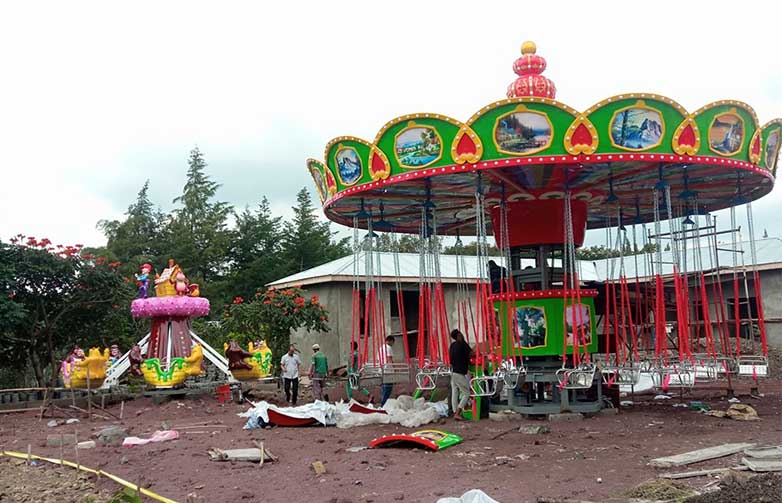
Featured | Dec 14,2019
Amidst 'umm's, and 'ahh's, while trying to salvage a discussion that turned to friendly banter, making headway to the precipice of never seeing each other, tackling each other’s every sentence struggling for the right words with nervous smiles and quick shakes of the head, making jokes to alleviate the grim situation and a strangled-sounding laugh punching a fist against our thighs, I received a news alert through my phone while having coffee with a dear friend in a café we frequently visit, one of the days last week.
We were arguing whether we have developed a tendency to tune into what may go wrong in the world today, instead of how well things are going. The bone of contention continued on whether the negative stories in the media are outweighing browsing positive ones. If so, did we really deserve the “doom scrolling” dubbing as we are presumed?
The news that came through was about the plan to put Ethiopia’s most enduring and celebrated novel - Fikir Eske Mekaber on the TV screen by a local company. Not because it was an opportunity to deflect or use it as an alibi to retreat from the conversation, but it was with wide grin eyes that sparkle and gleam garnished voice I conveyed the news to my friend.
He received it with an unrestrained smile, agape in wonder, noticeable tension leaving his body. Speaking in a bubbly tone, encouraged by his rapt attention, I chattered the literary prowess of the novel, with a superlative draught to express the author Haddis Alemayehu’s academic merit in conjuring timelessly relevant characters, and a theme that kept generations woke.
The pain I endured reading it all the way and after, how wet the book used to get as it was tarnished by my tears, how I used to stare at the picture of the author with frustration, the depressing years I had in my youth, it was as though I was actively involved in a close family story. There were only a few moments, I wept just so in my life.
Pretending to never heed what came to my mind next, I made a futile effort to intensely concentrate on something else changing the topic in any way possible that never paid off. What made me surprised and incapable of speech, garnished first with a fake smile as if I wanted to laugh it off, was that there are only a few of the many stories that have successfully made the transition from narrative fiction to the screen.
When a Novel is interpreted for Film, What gets lost in the translation? I was engulfed with thoughts as I made the remark about how the cross-media adaptation is going to endure the Byronic template of Fitawrari Meshesha and his often scheming or plotting inner circle on the screen. Or whether budget, running times, and the likes of cast frustrate the success by getting in the way, limiting the dialogue and plot repertoire aside.
Wrinkling my brow, I weighed the idea or choice on how the screen abides the two romantic icons of the book, whose presence shall take the stage, contemplating a few television series that have been successfully adapted across the screens.
Fikir Eske Mekaber is not deemed as a great book narrating only good news, its plot marvels unlock.
Leading us back to our previous conversation with my friend, we decided to perceive it as a piece of good news. It is time to be an optimist rather than the pessimism the world demands us to look for.
We wished such an imaginative plan to be accorded the concomitant artistic endeavour and herald a far higher audience engagement than the highly successful radio form irreplaceably presented by Wogayehu Nigatu breathing life into the characters as he narrates. We further wished Sew Mehon production to Break a leg! for its daring task, with hopes that the focus shall be not only on the stories we know very well and they are going to tell us, but also on the technical and aesthetic wonder we crave that has a bearing on the wider filmmaking industry in the country.
We also promised to each other to chase all bites and pieces about news in its making, much with optimism and guarded pessimism as the output of this pioneering venture has the potential to aesthetic quality for audiences in other parts of the world.
PUBLISHED ON
Mar 04,2023 [ VOL
23 , NO
1192]


Featured | Dec 14,2019

Fortune News | Sep 28,2019

Fortune News | Jan 25,2020

Fortune News | Mar 30,2019

Fortune News | Sep 14,2024

Fortune News | Feb 23,2019

Fortune News | Mar 04,2023


Fortune News | Mar 21,2020

Fortune News | Feb 01,2020

Dec 22 , 2024 . By TIZITA SHEWAFERAW
Charged with transforming colossal state-owned enterprises into modern and competitiv...

Aug 18 , 2024 . By AKSAH ITALO
Although predictable Yonas Zerihun's job in the ride-hailing service is not immune to...

Jul 28 , 2024 . By TIZITA SHEWAFERAW
Unhabitual, perhaps too many, Samuel Gebreyohannes, 38, used to occasionally enjoy a couple of beers at breakfast. However, he recently swit...

Jul 13 , 2024 . By AKSAH ITALO
Investors who rely on tractors, trucks, and field vehicles for commuting, transporting commodities, and f...

Jul 5 , 2025
Six years ago, Ethiopia was the darling of international liberal commentators. A year...

Jun 28 , 2025
Meseret Damtie, the assertive auditor general, has never been shy about naming names...

Jun 21 , 2025
A well-worn adage says, “Budget is not destiny, but it is direction.” Examining t...

Jun 14 , 2025
Yet again, the Horn of Africa is bracing for trouble. A region already frayed by wars...